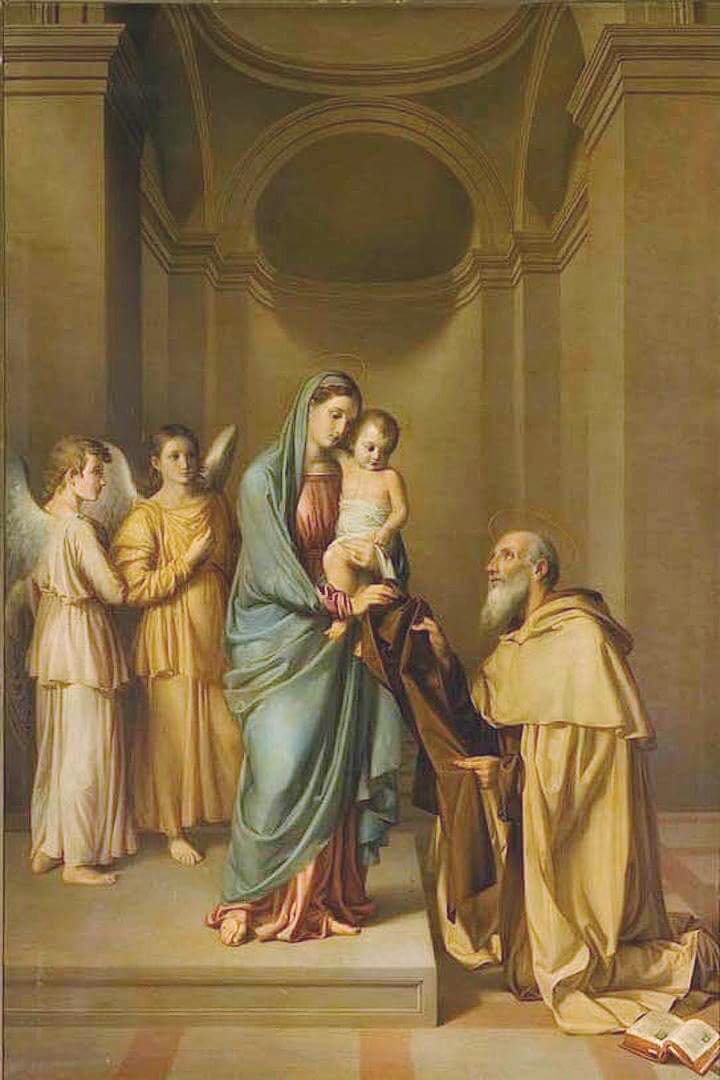
The Carmelite Scapular
The fourth reflection about the paintings by Michele Bellanti in the Church of the Annunciation, Mdina
“I brought you into a plentiful land,
to eat its fruits and its good things.”
Jeremiah 2: 7
Although we are certainly familiar with the devotion to the scapular of Our Lady of Mount Carmel—so assiduously encouraged by the Carmelite Orders—the understanding of its historical and spiritual significance is not obvious. According to a tradition harking back to the fourteenth century, on 16 July 1251 Our Lady appeared to St Simon Stock and promised him that whoever departs this life wearing this Scapular shall not suffer eternal fire. It is not clear whether this episode is historically factual, but it is undeniable that this devoutness has fostered a spirit of Marian devotion in the Church that, through powerful simplicity, shapes a truly Christian way of thinking and living.
The word ‘scapular’ comes from ‘scapula’, meaning the bone in the shoulder commonly called the shoulder blade and that connects the collarbone to the upper arm bone. Thus, this word refers to the form of the garment itself: a strip of fabric with a hollow space in the middle so that it can hang over the shoulders.
The habit worn by Carmelite monks and nuns is made of white and brown cloth. The white fabric symbolises Baptism, purity, and the mystic life towards which the Carmelite charisma strives. Meanwhile, brown reminds us of the penitential and ascetic life underpinning the path leading to full union with God. The process of conversion and spiritual exercise turns the soil of humanity into fertile ground bearing fruit. Not surprisingly, John Paul II reminds that those who wear the Scapular are thus brought into the land of Carmel, so that they may “eat its fruits and its good things” (Jer 2:7) and experience the loving and motherly presence of Mary in their daily commitment to be clothed in Jesus Christ and to manifest him in their life for the good of the Church and the whole of humanity (John Paul II, Message to the Carmelite Family,25 March 2001, par. 5).
Marian devotions and the promises attached to them are many and varied. But their purpose essentially is always to attune our hearts to that of Mary, the Mother of God, so that like her we will be ones conveying divine life. Which begs the question: how are you living out your union with Mary? Examine your conscience to see whether you are placing emphasis on what is most important. Is Mary not important in your faith life? Remember that it was God himself who made her indispensable to our redemption, which IS through Christ, but which firmly relied on Mary’s role in freely cooperating with His plan. What are you ‘wearing’ to be a sign in the world? What is the scapular that you carry on your shoulders, which is like a yoke that, while hefty, is a portent of salvation?



